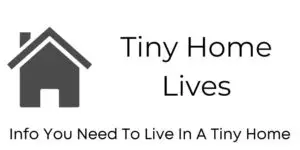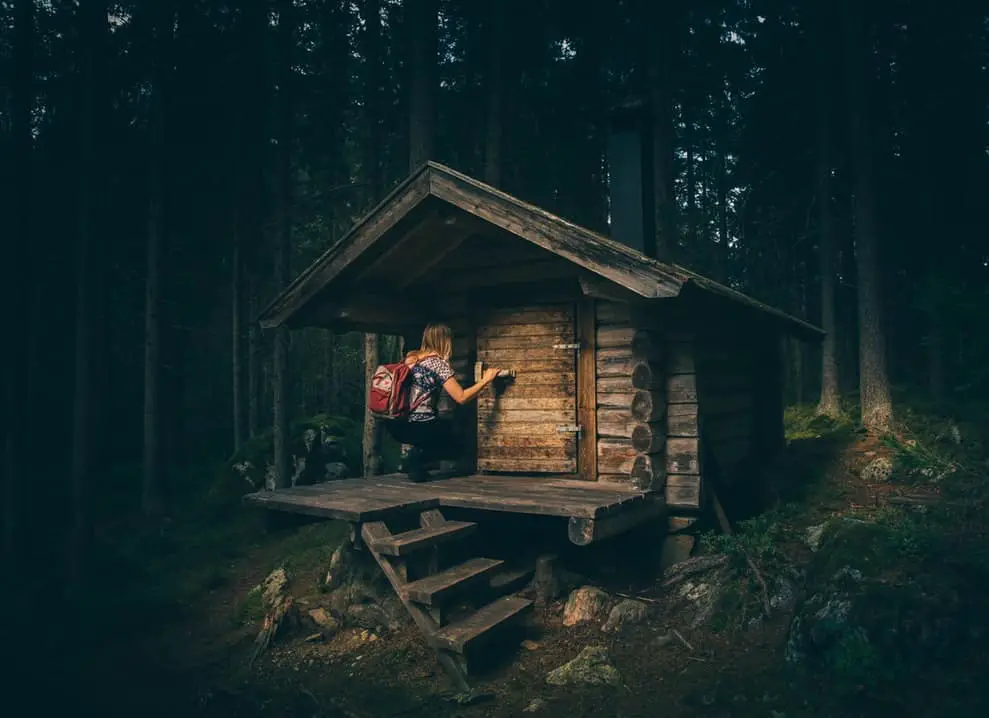Table of Contents
*This post may contain affiliate links. As an Amazon Associate we earn from qualifying purchases.
Image from Pxhere
More and more people are making the choice to downsize into a tiny house. Tiny houses offer the flexibility of lower costs and a more simplified living arrangement. Tiny houses could be an option for people with poor credit, or individuals who do not want to accrue any further debt. Building a tiny house can be a great educational experience, and it’s likely that if you ever purchase a full-sized home, you’ll be happy for the skills you learned while constructing a tiny house. In this article, we’ll discuss the tiny house basics and help inform you about this growing lifestyle trend.
Tiny House Basics
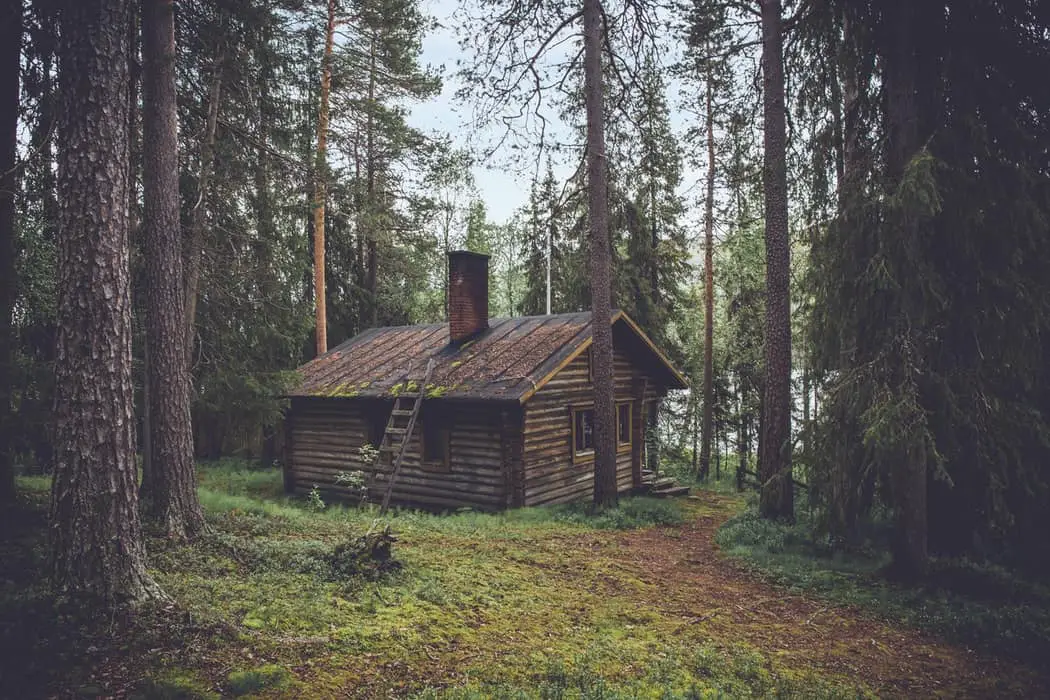
Image from Unsplash
From a young age, we’re programmed to desire a large, spacious home. However, as you get older, you come to realize that homes are not only very expensive investments, they’re also time-consuming to maintain. Some individuals who purchase large houses often regret it as they find expensive mortgages keep them from having funds for recreation. They are also reluctant to travel and leave their home behind. There are several ways that a tiny house can give you more free time.
Lower Cost
A tiny house can save you money in a variety of ways. First, the material costs are lower since the tiny house is so small. But even if you elect to build a larger-than-average house, you’ll save a tremendous amount of money on construction costs. There are many online communities with plans, tips, and online videos to give you some ideas as you plan your tiny house. Some people claim they built their tiny house for under $500. Keep in mind that extremely low cost often comes with certain sacrifices. You likely will not have running water in a $500 tiny house.
No matter what kind of house you build, it’s important to know that you will learn a lot from any project. Deciding to live in a tiny house is just like selecting any other house. Usually, there is an inclination deep inside you that pushes you in that direction. When you find yourself in the home where you want to live, your spirit tells you so. Perhaps you will build your tiny house and be at ease. However, if you complete your tiny house and decide it isn’t for you, remember that you have a lot more flexibility to change your situation if you’d purchased a massive home from the start.
Lower Maintenance
One thing that nobody tells you about home ownership is that there is a lot of maintenance you have to do. From cleaning gutters to fixing the roof to repairing water damage, owning a house can seem like a full-time job. If you’re purchasing a house, a cursory inspection will not reveal if the builders were diligent in their labor, or if they cut corners. In fact, you can almost depend on there being problem areas in any home on the market. Replacing a roof, for example, can cost you a huge amount of money.
Whether you purchase a tiny house or build one, you’re likely to encounter fewer maintenance issues. Tiny houses are simple, and they are usually labors of love. The people who build tiny houses do so in the spirit of liberation, so you’re likely to get a well-constructed home. But even if there are issues, a tiny house is easier to maintain. Most tiny houses are also fairly new, so you’re likely to get something that will not take all your time to maintain.
Greater Flexibility
One of the best things about a tiny house is the change it will have on your overall life choices. Many people feel an obligation to spend all their time in their homes because they have mortgages in the thousands of dollars. People who own tiny houses love their homes, but they also have greater freedom to purchase an airplane ticket and spend a month in Lima, Peru, or wherever they’ve always wanted to go. A tiny house becomes a base of operations for a lifetime of adventure.
People in our society have become so accustomed to debt that they can barely comprehend what it is like to live without it. When you don’t have a mortgage hanging over you, you can look at every aspect of your life differently. If you hate your job, you can quit. If you decide you want more creature comforts, you can go stay in a hotel for a few days. These options are available if you first commit to living in a tiny house that is well within your financial means.
What Is Tiny House?
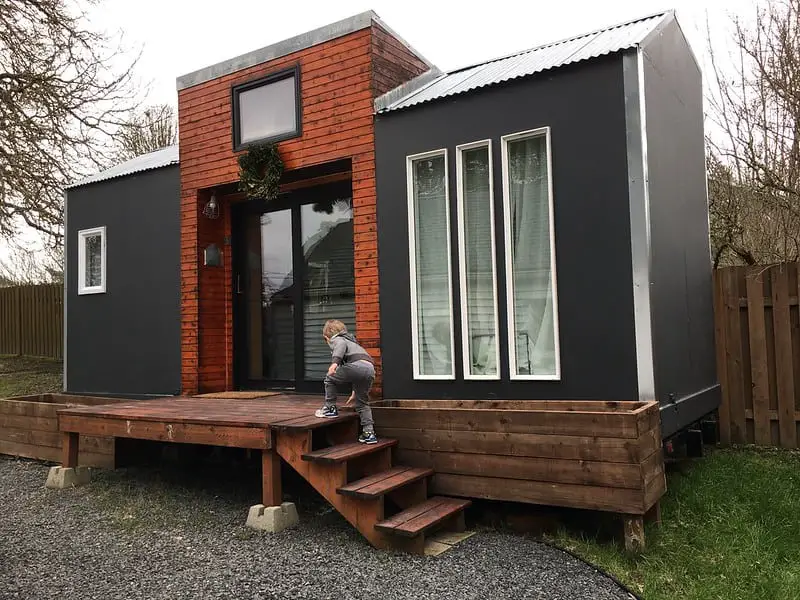
Image by aehdeschaine from Flickr
The tiny house label could refer to many things. One of the tiny house basics is that a tiny house is around 400 square feet.400 square feet is about the size of a two-car garage and is actually just a little smaller than a standard studio apartment. Living in a tiny house requires a certain amount of creativity and practicality. In a large house, people can afford to have massive areas just to enjoy space. You can still enjoy wide open space with a tiny house, just not enclosed within your primary living space.
There are two main ways to build a tiny house:
Trailer Style Tiny House Basics
There are several advantages to building your tiny house on a trailer. Building on a trailer will make your tiny house portable. This allows you to take your home with you on vacation, or move to a new job opportunity with greater ease. Building a tiny house on a trailer gives your home the legal definition of an RV. You will have to take the home built trailer in for an inspection before you are granted a license plate, but generally, it is easier to pass an RV inspection than it is to pass an inspection for a permanent dwelling.
Laws differ by state, so before you begin construction on your trailer tiny house, be sure to reference what is required for recreational vehicles where you live. Some states have laws against individuals using an RV as a permanent residence. However, many of these laws are worded so that you can fulfill all RV living legal obligations simply by moving your house periodically.
Foundation Style Tiny House Basics
Building your tiny house on a foundation introduces several complications. In this scenario you are better off owning the piece of property where you are going to build. A tiny house built on a foundation is legally designated as an Accessory Dwelling Unit (ADU), which can also be called a secondary living unit on a property. Constructing an ADU requires you to have full awareness of both zoning and building codes in your area.
Sometimes tiny house communities spring up on a plot of land with a traditional structure. The traditional structure fulfills the legal requirement, and the tiny houses are considered secondary dwelling units on the property. Although this kind of arrangement can circumvent certain legal hurdles, it can also introduce its own new set of complications.
Building Code vs Zoning
Once you’ve decided to embrace the tiny house lifestyle, you need to decide where you want to live. There is a certain simplicity and freedom in purchasing a small plot of land and building your house. If you purchase land, remember that you will have to pay land taxes every year. However, land is almost always a superb financial investment. Stocks can fluctuate in value and even become completely worthless, a plot of land will always be worth something to somebody. Even if you lose money investing in land, you’re likely to get some of your initial investment back.
An easy solution is to build your tiny house on a trailer and then park it on a piece of land you own. You can even build a framework around the wheels so that it’s not so conspicuous that your house is on a trailer base. This still fulfills the legal requirement of an RV definition. If you decide you’d rather build on a permanent foundation, you have to consider two things:
Building Code
Building codes are legal requirements that have been set to ensure the health, safety, and welfare of building occupants. Building codes can have size specifications, which can make the design and construction of your tiny house difficult. There is some flexibility in building codes for Accessory Dwelling Units, but building a tiny house on a foundation can become problematic.
This is why so many individuals choose to put their tiny house on a trailer. You can also apply for a permit to build outside of the standard building code parameters in most cases.
Even if you are going to build on a trailer, however, it’s worthwhile to reference building codes just for an awareness of what constitutes good construction policy. Building a tiny house can be a very fun project and is a great learning endeavor. It’s important that you do the necessary research to ensure that your finalized structure will not be hazardous to you or anyone else.
Zoning
Zoning determines the legal requirements for what can be built on a given piece of land. Land in all municipalities is divided up into zones. Zoning laws vary by state. Some states have very progressive zoning laws that have already implemented exceptions, or legal changes that make it easier for individuals to construct tiny houses.
It’s unlikely that you’ll get into legal trouble if you purchase a piece of land in a rural area and permanently park an RV tiny house on that property. Parking an RV tiny house on land in an urban area is more likely to get noticed and lead to a possible complaint or legal situation.
Water and Septic Tiny House Basics
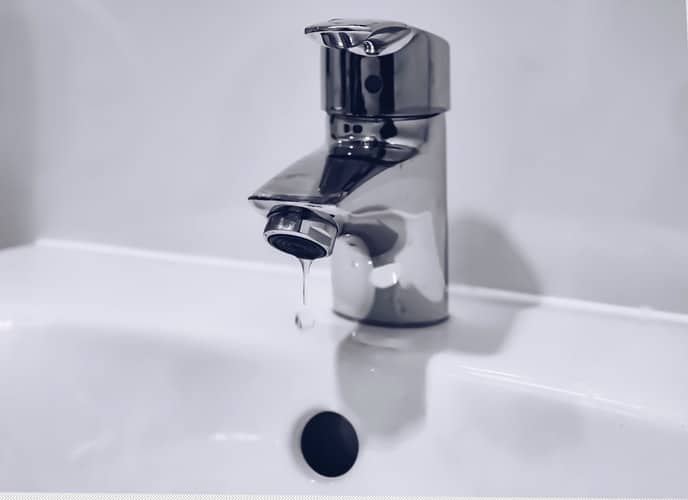
Image from Unsplash
Everybody loves to go camping, but the best part of a camping trip is coming home to your bathroom and having a great, long, and relaxing shower. You can build a simple living shelter without running water.
However, if you’re going to live in a place for any amount of time, you’re going to want a toilet and a shower. There are many options for setting up your water and septic system. Ultimately, what you pick to solve your water and septic needs will depend on what type of house you are building, where it will be located, and what installations will already be available.
Keep in mind that with a trailer type tiny house you’re essentially building an RV. For ideas on how to handle your water and septic system, check for solutions common to RV design. Most of these ideas can be adapted to your tiny house needs. If you’re building a tiny house on a foundation, you can plan on constructing a water and septic system similar to any house. Here are some terms that you will need when discussing your tiny house water and septic needs.
Greywater
Greywater is the water that comes from washing dishes, the shower, the sink, etc. It is used water that does not contain human waste. In most houses in urban areas, all wastewater from your home is drained out into the municipal septic system. It is possible to design your system so that the greywater is used for the toilet water, or in other recycling purposes.
Blackwater
Blackwater is the wastewater that is generated by your toilet. Proper blackwater management is a critical consideration for any tiny home. Without proper blackwater management, your home could become a public health risk, and you’ll certainly draw the attention of authorities and face legal action. The simplest way to dispose of blackwater properly is through a simple hookup to the municipal septic system.
Holding Tank
A holding tank is a small tank within an RV that can hold a certain amount of blackwater. Holding tanks usually have a capacity of around 50 gallons, and must be flushed out occasionally.
Septic Tank
A septic tank is an underground chamber that can be made from a variety of materials that serve as an onsite sewage facility. Septic tanks can be installed in rural areas where a city sewer system is not accessible.Depending on the building and zoning requirements of your tiny home site, it may be possible to install a septic tank which your tiny home can utilize through standard hook ups. A trailer based tiny home maintains a legal definition as an RV if it can be hooked up and disconnected to an external septic tank.
Compost Toilet
A compost toilet is a toilet that operates without external water. Using a compost toilet reduces the amount of blackwater you create, but you will still have waste management considerations even with the use of a compost toilet.
Hookups
Hookups are various tubes that exist at campsites and sometimes at rural areas that allow your trailer based tiny home to connect to existing sewage options. Consider the placement and the means by which you will utilize hookups when you’re in the planning stages of your tiny house.
Final Thoughts on Your Shower, Sink, and Toilet
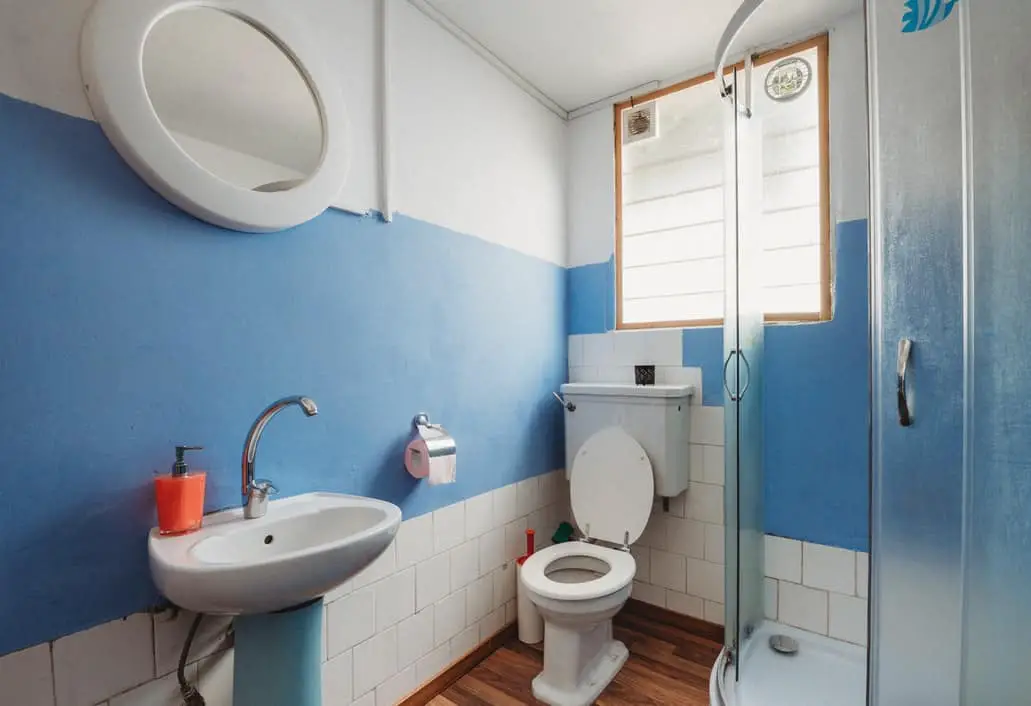
Image from Unsplash
Plumbing is one of the major areas of complexity for any dwelling. The more of a functional, modern toilet, shower and sink you are able to install in your tiny house, the more comfortable you will be. Of all the components of your tiny house, the construction of a septic system will be the one most likely to require the services of a professional contractor.
The septic system is one of the areas of your house where it will be difficult to cut costs. Even if you choose to go with a compost system, leave space where you can retrofit a more modern septic system. It’s easier to install a better system later if you’ve planned for it.
Water
Water is another critical aspect of a tiny house that can create some complexities. City water is supplied at pressure, and if you are able to build in an urban area with access to hookups to city water, you will have a very modern feeling tiny home. If you are going off the grid, it’s also possible to manage your water in a number of ways. Remember to take special precautions to ensure your drinking water is always potable.
Make sure to store your drinking water in food grade containers. The water you use for bathing and dishes should also be high quality, although river water is acceptable for this purpose.
Here are some concepts for managing your water which you can choose from or adapt based on your unique tiny home circumstances:
City Water
RV parks always have a water hook up that is as simple as connecting a hose from the water source to your tiny home. Make sure you use an RV white hose so that your water tastes good. The only potential problem with city water is if you live in a climate that has freezing weather. Exterior hoses can freeze, and if you want your tiny house with a city water hookup to be a permanent living situation, you must insulate and heat the water lines throughout the year.
Rain Water
Some individuals who live off the grid attempt to store rainwater in cisterns or barrels. There are several drawbacks in relying on rainwater. Rain is unpredictable. Also, make sure that whatever storage system you settle on keeps your water supply free of contaminants.
Gravity Fed Storage System
It is possible to construct a system that replicates the high-pressure water of a city even while living off the grid. For example, if you store your water in a large cistern, and then run feed hoses to your tiny house, you will have pressurized water in your shower and faucets. The problem with such a system is that it is susceptible to freezing and contamination.
Rivers, Streams, and Lakes
When living off the grid you can effectively utilize any water source. Rivers, streams and lakes are ideal for bathing and washing clothing. If you live next to a suitable river, you can sometimes achieve potable water through purification or filter systems. Part of the challenge of tiny home living is adapting to your situation and arriving at the ideal solution to your needs.
Water Heating
Inexpensive electric water heating systems exist that can heat your water for warm showers and other purposes. A simple elevated black bag can be effective to create a warm shower. The black bag absorbs sunlight, and the elevation allows the shower to function via gravity.
Tiny House Basics for Insulation and Heating
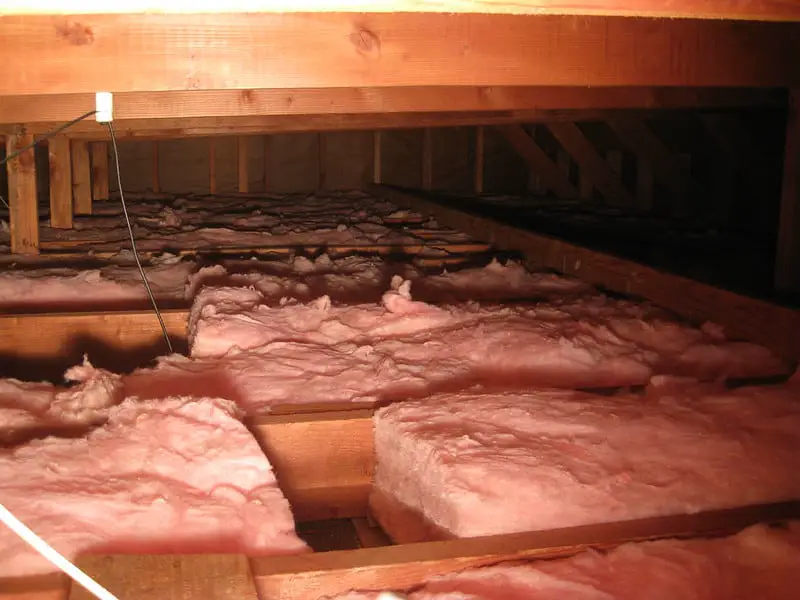
Image by moppet65535 from Flickr
Your home is a shelter, and as you are designing the residence, you must consider the seasonal changes in your geographic region. We’ve already discussed how you must ensure that your water system is not subject to freezing, which can mean providing a heated, insulated enclosure for your water hoses. Now we’ll discuss the tiny house basics for heating and insulating your living space.
The critical components for creating a cozy living environment are:
Airtight
For this part of your tiny house construction, you will need to research basic good practice techniques for building. When you have finished your structure and applied both the interior and exterior paneling, make sure to seal up any cracks. You don’t want wind blowing through your tiny house. However, be mindful of proper ventilation. You don’t want to have any issues with Carbon Monoxide which may come as a result of your heating system.
Insulation
Any enclosed space will provide protection from the elements. Even a thin fabric tent with two occupants will be significantly warmer than outside air temps just from the heat of the bodies inside. If you are living in a very warm climate, insulation is less critical. However, if you are located in the north, or in an area that has an occasional sub-freezing night, it is important to install good insulation.
Insulation is installed during the building process. Most building centers can give you several good options for insulation. Put the insulation in the wall, seal up the cracks, and apply the interior and exterior paneling. Insulation alone will create a very nice shelter, but for true comfort, you’ll want a source of heat.
Heat Source
There are many options for heat. Electric heaters are very effective and particularly reliable if you’re near a city electrical grid. If you are off the grid, it may be possible to power your electric heaters with solar panels or batteries. Another heat source is wood, coal, or pellet stoves. Wood and coal stoves are very reliable and require only common wood as fuel. Pellet stoves are more efficient stoves that have more efficient, safer venting. Any burning option will easily heat any tiny house, but there are some concerns with exhaust gasses. Make sure you consult a professional when you install your heating system.
Power Source
Electrical power is another critical component of modern living and should be a consideration for your tiny house. Your power source can be as simple as plugging into a nearby electrical grid. But if you re off the grid there are several options to consider:
A small solar power panel can be very effective in meeting the needs of a tiny house. If you have a small refrigerator, you may want to experiment with rechargeable batteries that function in conjunction with a solar panel.
A wide array of batteries are available, most of them require either on-site recharging or recharging at designated locations.
A gas powered electric generator can be a very stable and efficient source of electricity. The only problem with a gas powered generator is that they tend to be noisy. Other off the grid power generators may use wind or running water.
Interior Decorating Tiny House Basics
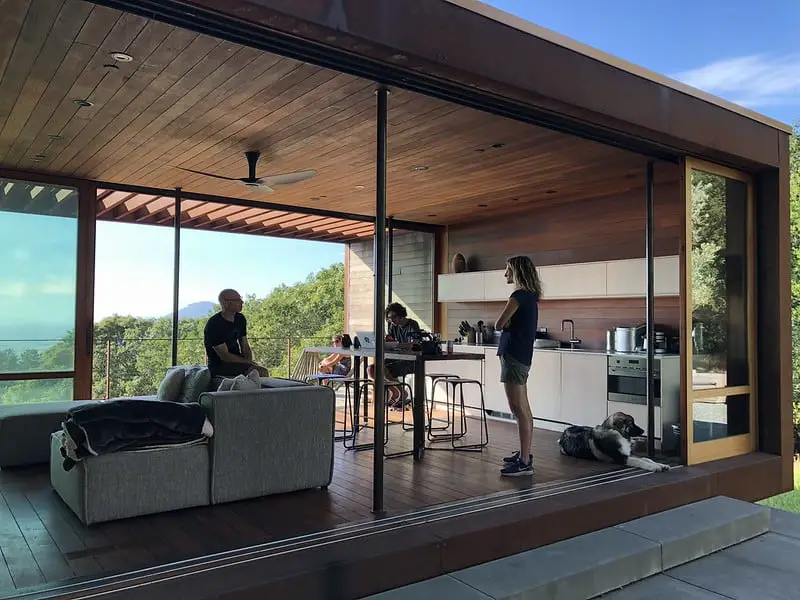
Image by Nicolás Boullosa from Flickr
Just because a tiny house is small, doesn’t mean it needs to feel cramped. With proper planning and strategic use of space, you can make your tiny house into a very efficient, and comfortable living space. One of the main expenses of a traditionally sized house is the extra expense it takes to heat all the space. With a tiny house, you can create a small, efficient, cozy space that fulfills all your living needs.
The real genius of a tiny house is figuring out how to get the most functionality out of every square inch of space. You need to store your clothing and personal items, have a space for leisure, and a place for food storage and eating. There are many great examples of how people have created multi-functional rooms online with many video tutorials. Some tricks to consider for making your tiny house feel like a mansion are:
Windows and/or Skylight
One of the great advantages of living off the grid is having the opportunity to look up and contemplate the stars. A skylight in the ceiling of your tiny house can make a low ceiling room feel like an infinity chamber. Even a small portal in one corner of your roof can completely change the ambiance of your entire living space. Large wall windows can also open up a space and reduce feelings of confinement.
Dual Purpose Furniture
It’s difficult to have dedicated rooms when you only have 400 square feet of living space, so multi-purposing is a great tactic to consider. A kitchen table that folds into a wall, or down into the floor can help free up space. Wall hooks can help organize clothing, and a sofa that turns into a bed in the evening can create an illusion of multiple rooms that can be transformed from a single space.
Stowaway Bed
In a traditional home, bedrooms are some of the least efficient uses of space. Beds are very large and serve little purpose except when they’re being used for sleep. In a tiny house, a bed on an elevated platform above your living space can be a very efficient way to reclaim limited space. Sleeping in a confined, capsule-like space might take some getting used to, but you’ll appreciate the space savings in the long run. A stowaway sleeping area with a skylight portal can help a small sleeping space feel larger than it really is.
Experience the Freedom of a Tiny House
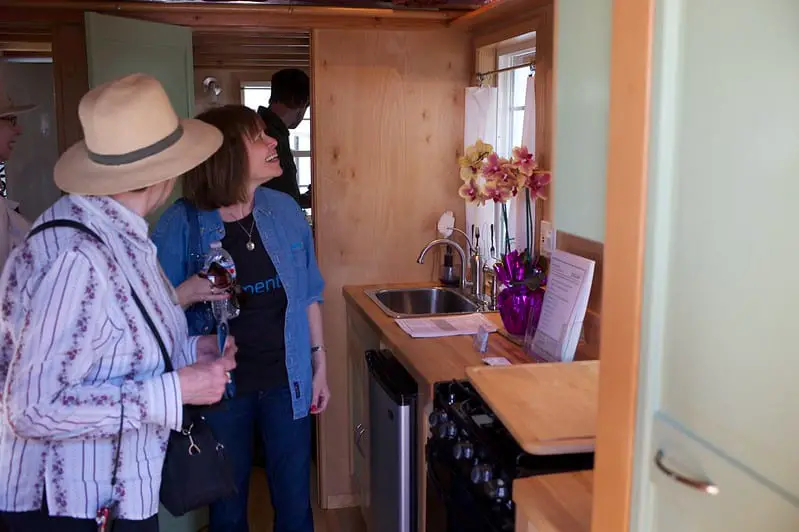
Image by John Callas from Flickr
Tiny houses are more than just a place to live, they offer a new perspective on everything. Designing and building a tiny house allows you to reexamine many aspects of your life that you’ve never considered before. A tiny house allows you to highlight the elements of life you find to be the most enticing and to deemphasize those that you discover to be less important.
A tiny house can be a pathway to a new life of freedom that you never thought was possible. There is a trade-off in that the living space of a tiny house is limited compared to a traditional house. However, the lower cost and maintenance obligations of a tiny house allow you to use more of your hard earned money for the type of recreation and adventure that you find most appealing.
Most traditional houses are quite similar, but every tiny house is a unique reflection on the lifestyle and the personal choices of the individual who built it. In a world that constantly pressures us to rush, a tiny house requires us to stop and think about the most minute details of how we can best go about living our daily lives. Whether you build a tiny house on a permanent foundation, or you construct one on a mobile trailer, a tiny house allows for the perfect realization of the unique space you were meant to inhabit. Don’t wait, start planning and constructing your tiny house today!
Featured Image: Unsplash
